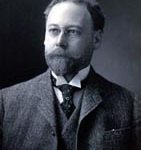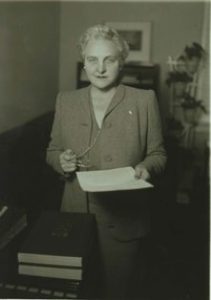 Francis Payne Bolton
Francis Payne Bolton
week of March 29
Francis Payne Bolton (29 March, 1885 – 9 March 1977)
Francis Payne Bolton had a long career as a U.S. congresswoman. But she is probably best known for her advocacy for nursing and nursing education. She helped to found a separate nursing college at Western Reserve in 1923.
Here is a web site created by WNET/PBS that tells the story of the life of Francis Payne Bolton
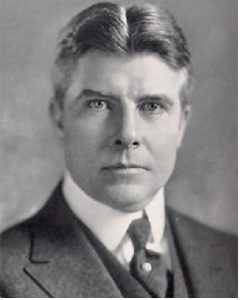 Frank A. Scott
Frank A. Scott
week of March 23
Frank A. Scott (22 March, 1873 – 15 April 1949)
Frank Scott was a self made man rising to become President of Warner & Swasey Company. He was brought to Washington D.C. during World War 1 by Secrertary of War Newton D. Baker to become Chairman of the War Industries Board, an organization that attempted to bring together and organize industrial production for the war effort. It was an incredibly difficult job as each arm of the miitary tried to keep control over their own supplies which led to inefficiency. Mt. Scott finally collapsed physically and had to resign. He went on to become a highly respected business and civic leader in Cleveland.
Here is an article about Frank A. Scott published during WW1
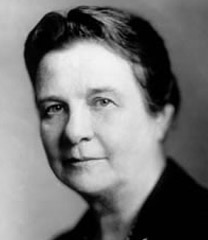
Belle Sherwin 1914 (Cleve Foundation)
week of March 16
Belle Sherwin (20 March, 1868 – 9 July 1955)
Belle Sherwin was a noted feminist, social service and civic leader. A daughter of Sherwin Williams founder, Henry Sherwin, Ms. Sherwin was the first President of the Consumers League of Ohio in 1900. She was a Director with the Cleveland Welfare Federation (today’s United Way) between 1900 – 1914 and then she went to become national President of the League of Women Voters between 1924-1934.
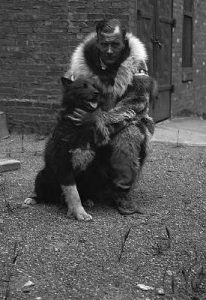
Balto with Gunnar Kaasen (Wikipedia)
week of March 8
Balto (???? – 14 March, 1933)
Lead sled dog and part of a team of dogs who “struggled against high winds and brutally cold temperatures” to get diptheria serum to isolated Nome Alaska in 1925. Balto and his team briefly became national heroes and then were sold to owners who made them perform at a “dime museum.” The citizens of Cleveland came to their rescue by raising money to bring them to Cleveland and allow them to live out their lives with dignity and respect. Their memory is honored to this day.
Balto also has a staue in New York’s Central Park that has this inscription:
Dedicated to the indomitable spirit of the sled dogs that relayed antitoxin six hundred miles over rough ice, across treacherous waters, through Arctic blizzards from Nenana to the relief of stricken Nome in the Winter of 1925.
Endurance · Fidelity · Intelligence
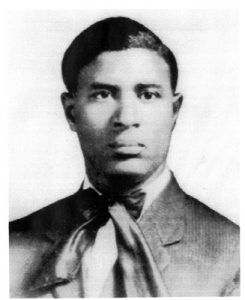 OH Historical Society
OH Historical Society
w/o March 1
Garrett A. Morgan (4 March, 1877 – 27 July, 1963)
African American entrepreneur who invented first versions of the gas mask and traffic signal. He continued to invent new products all his life. Mr. Morgan founded the Cleveland Call weekly newspaper which later became the Cleveland Call and Post. Read more about Garrett Morgan in this essay written by Margaret Bernstein.
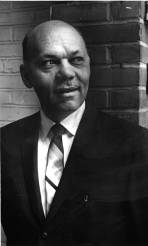 Dr. Kenneth W. Clement (CSU)
Dr. Kenneth W. Clement (CSU)
w/o February 22
Kenneth W. Clement (24 February, 1920 – 29 Nov, 1974)
African American physician and civic leader during the tumultuous 1950s, 1060s and early 1970s. Dr. Clement was a key advisor to Carl Stokes during his run for mayor in 1967 and then he famously broke with Stokes and the two became rivals. Clement graduated from Oberlin College in 1942 and Howard Medical School in 1945. He was a national director of the NAACP and Urban League. To read about Carl Stokes’ election in 1967 click here.
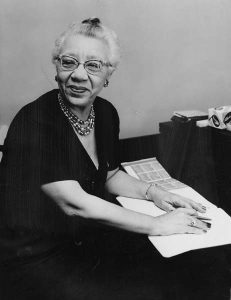 Hazel Mountain Walker (CSU)
Hazel Mountain Walker (CSU)
w/o February 15
Hazel Mountain Walker (16 February, 1889 – 16 May, 1980)
Hazel Mountai Walker was the first African American Cleveland school principal and had an impact on thousands of Cleveland school children. For 27 years between 1909-1936 she taught at Mayflower Elementary School, known for teaching students whose families did not read or speak english. Walker was an actress, involved in politics and a non practicing attorney. Here is a short video about Ms. Walker.
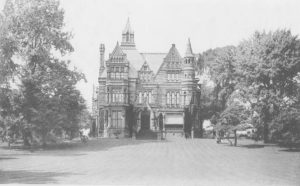 “Andrew’s Folly”
“Andrew’s Folly”
w/o February 8
Albert Samuel Andrews (10 February, 1836 – 15 April, 1904)
The man who created the process for turning crude oil into kerosene. His partnership with John D. Rockefeller helped to create the oil industry. Andrews and Rockefeller had a famous falling out with Andrews leaving Standard Oil in 1874. He sold his Standard Oil stock for $1 Million which was a very big mistake, as the same stock would have been worth hundreds of millions if he had held on. Andrews built a giant house on Euclid Avenue which was called “Andrew’s Folly” by Clevelanders because it was so impractical to live in. Here is Samuel Andrew’s biography in the Encyclopedia of Cleveland History.
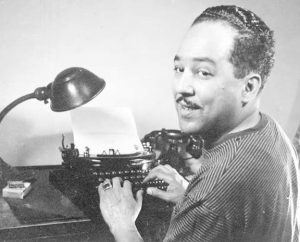 Langston Hughes (biography.com)
Langston Hughes (biography.com)
w/o February 1
Langston Hughes (1 February 1, 1902 – 22 May, 1967)
Cleveland Central High student who did some of his best work at Karamu Theater, Langston Hughes was a poet, writer of fiction, humor, education, plays, history and more. Hughes is best known as a leader of the “Harlem Renaissance”
Google did a fabulous aggregation of content about Langston Hughes here
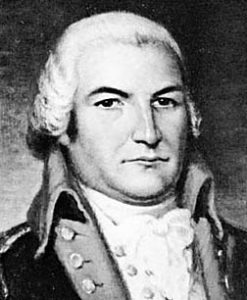
Moses Cleaveland – Oh Historical Society
w/o January 25
Moses Cleaveland (29 January, 1754 – 16 Nov, 1806)
Moses Cleveland, the man, who modern day Cleveland was named after, was born this week in 1754. Cleveland was a land investor and thought that “the location, where river, lake, low banks, dense forests, and high bluffs provided both protection and shipping access, was the ideal location for the “capital city” of the Connecticut”
He was wrong. He lost money on his investment and went back to Connecticut. Its a good story, but I tend to prefer the story of Lorenzo Carter, the man who came and stayed. Mr. Cleaveland has a statue on Cleveland’s Public Square. Mr. Carter was buried in Erie Cemetary on East 9th street across from Progressive Field.
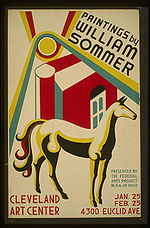 William Sommer Art Exhibit Poster
William Sommer Art Exhibit Poster
w/o January 18
William Sommer (18 January, 1867 – 20 June, 1949)
William Sommer was an artist and an acknowledged leader of the “Cleveland School”, a group of Cleveland-based artists that were strongest between 1910s – 1940s. This talented group included Viktor Schreckengost, Leza and William McVey, Henry Keller, Edris (Edith Aline) Eckhardt, R. Guy Cowan, Charles E. Burchfield and others. Read more about the “Cleveland School” in this essay written by William Robinson from the Cleveland Museum of Art
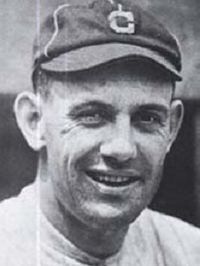 Ray Chapman
Ray Chapman
w/o January 11
Raymond “Ray” Johnson Chapman (15 January, 1891 – 17 August, 1920)
The last baseball player to be killed playing the game. Ray Chapman was a Cleveland Indian between 1912 and his death in 1920. He was hit in the head by a pitched baseball by Carl Mays of the New York Yankees. After Mr. Chapman’s death, the Cleveland Indians went on to win the 1920 World Series. Read this story by Bill Livingston of the Plain Dealer to learn more. Also read this.
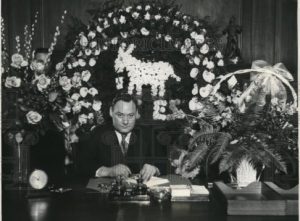
Ray Miller, Cleveland Mayor 1932
w/o January 4
Raymond Thomas Miller (10 January, 1893 – 13 July, 1966)
Ray Miller was Mayor of Cleveland, Cuyahoga County Prosecutor and Cuyahoga County Democratic boss for more than 20 years. He was a leader in making the Democratic Party the dominant political force in Northeast Ohio after many years of Republican rule. Miller helped to defeat Cleveland’s City Manager government of the 1920s arguing for a return to elected mayors.
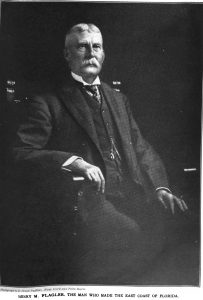
w/o December 28
Henry M. Flagler (2 January, 1830 – 20 May, 1913)
Credited by John D. Rockefeller as being his most important colleague during the creation of Standard Oil, Henry Flagler was a great salesman, willing to take great risks and somewhat of a rogue in business. After making millions at Standard Oil, Flagler moved to Florida where he helped to build the great North-South railroad that made Florida development possible. Read more about Henry Flagler here
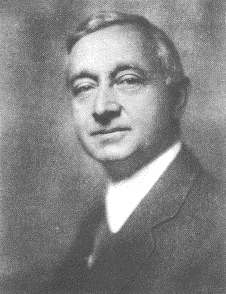 Cyrus Stephen Eaton
Cyrus Stephen Eaton
w/o December 21
Cyrus Stephen Eaton (27 December, 1883 – 9 May, 1979)
Cleveland industrialist who made and lost a fortune and then made another. He then capped his career as an advocate for detente with the Sovet Union. He was famously known as Soviet leader Nikita Khrushchev’s favorite capitalist. Read more about Cyrus Eaton here
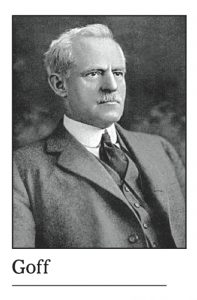
w/o December 14
Frederick H. Goff (15 December, 1858 – 14 March, 1923)
Frederick Goff helped to establish the Cleveland Foundation, the first community foundation in the country in 1914 and a model for the entire country. He was president of Cleveland Trust and helped to make it the largest bank in Cleveland during his tenure from 1908 thru his death in 1923. Read more about the Goff and the Cleveland Foundation here.
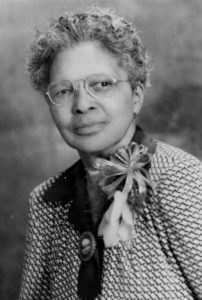 Jane Edna Hunter
Jane Edna Hunter
w/o December 7
Jane Edna Hunter (13 December, 1882 – 17 January, 1971)
Founder of the Phyllis Wheatley Association and prominent African-American social worker, Jane Edna Hunter fought racism through providing help with employment, housing and equal access to education. For more information, click here
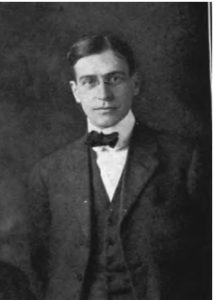
w/o November 30
Newton D. Baker (3 December, 1871 – 25 December, 1937)
Perhaps the best Mayor that Cleveland has ever had, Newton D. Baker served as the legal center of Tom L. Johnson’s administration (1901-1909) before being elected Mayor for two terms between 1912-1915. He was then appointed Secretary of War by President Woodrow Wilson. Baker founded what became one of the naton’s largest law firms, today’s Baker Hostetler and was considered by many to be one of the best legal minds of his generation. He coined the term “Civitism” which asked Clevelanders to love their city as much like they loved their country. Teaching Cleveland Digital is dedicated to the memory of Mr. Baker. Read more here
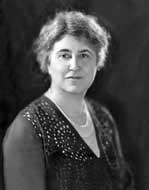 Adella Prentiss Hughes
Adella Prentiss Hughes
w/o November 23
Adella Prentiss Hughes (29 November, 1867 – 3 August, 1940)
No less than the founder of the Cleveland Orchestra, read about Adella Prentiss Hughes here
Then read this essay on the founding of the Cleveland Orchestra written by Bob Rich
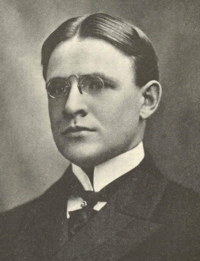 Frederic C. Howe
Frederic C. Howe
w/o November 16
Frederic C. Howe (21 November, 1867 – 3 August, 1940)
A close political ally of Tom L. Johnson and Newton D. Baker, Fred Howe was a writer, politician, lawyer, social reformer and advocate for urban areas. He is best known for his autobiography, “Confessions of a Reformer”. Read one chapter here. Also read Marian Morton’s essay about Frederick Howe and his advocacy for the “City Beautiful” movement.
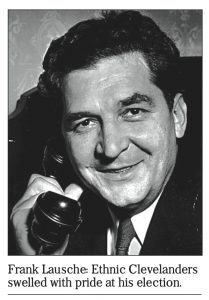
w/o November 9
Frank J. Lausche (14 November, 1895 – 21 April, 1990)
One of the most successful politicians in Ohio history, Frank Lausche was elected Mayor of Cleveland (in 1941), Governor of Ohio (in 1945) and Senator from Ohio (in 1956) and he was the first of several Cleveland mayors who were of Eastern European descent. Lausche was a Democrat, but was famously known for his independence and he often took positions that were opposed by other Democrats. Here is a wonderful essay on Lausche written by Brent Larkin for the Plain Dealer Sunday Magazine on November 10, 1985.
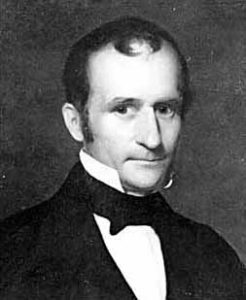
Alfred Kelley, Ohio Historical Society
w/o November 2
Alfred Kelley (7 November, 1789 – 2 December, 1859)
Father of the Ohio-Erie Canal and later on a strong advocate of railroad development, Alfred Kelly probably more than any other person put Cleveland on the map during the pre Civil War era. One of the first advocates of public-private economic partnerships which made it economically possible for the Canals to be built. Read Mike Robert’s essay on the building of the canals in Ohio.
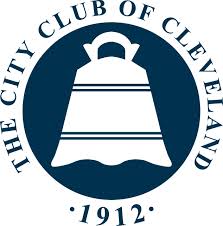
w/o October 26
City Club of Cleveland (30 October, 1914 – )
The Cleveland City Club, Cleveland’s “Citadel of Free Speech”, held its first meeting on October 30, 1912. To read more about the founding of the City Club, read this short book written by Dr. Thomas Campbell, “Freedom’s Forum” and a must-read for any serious student of Cleveland history
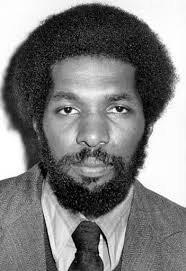 Lonnie Burten Jr.
Lonnie Burten Jr.
w/o October 19
Lonnie Burten Jr. (20 October, 1944 – 29 November 1984)
Activist and Cleveland Councilman who tragically died at a young age, Burten’s life was an inspiration for many including current Cleveland Mayor Frank Jackson. Read about Burten here
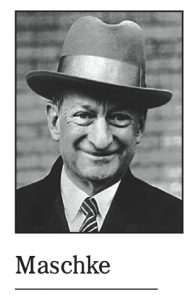
w/o October 12
Maurice Maschke (16 October, 1868 – 19 November 1936)
The Republican Boss of Cleveland for over 20 years during the 1910s, 20s and early 30s. When Cleveland Republicans were in the majority. Maschke was Harvard educated, a world-class bridge player who helped to defeat Tom L. Johnson in 1909 and elect William Howard Taft in 1912. Read more about Maschke here
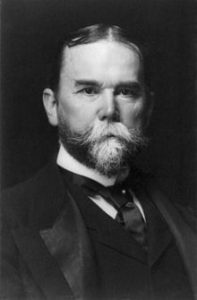 John Hay
John Hay
w/o October 5
John Milton Hay (8 October, 1838 – 1 July 1905)
John Hay had a long career in the public eye starting as a young man as Abraham Lincoln’s person secretary in the 1860s. Hay wrote the first biography of Lincoln along with Lincoln’s co-secretary John Nicolay. John Hay married Clara Stone the daughter of Amasa Stone and sister of Flora Stone Mather. Hay lived in Cleveland between 1875 and 1886 before moving to Washngton D.C. where he became Secretary of State during the William McKinley administration. Read more about John Hay
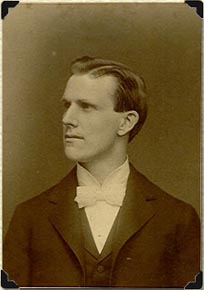 George Bellamy (Hiram House)
George Bellamy (Hiram House)
w/o September 28
George Albert Bellamy (29 September, 1872 – 8 July 1960)
Founder of Hiram House, the first and most prominent of Cleveland’s Social Settlements in the late 19th century. Read more about Cleveland’s creative and dynamic settlement movement here
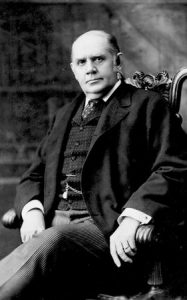 Marcus Hanna (Ohio Historical Society)
Marcus Hanna (Ohio Historical Society)
w/o September 21
Marcus Alonzo Hanna (24 September, 1837 – 15 February 1904)
Businessman, Republican political leader and one of the creators of modern political campaigns.
Mark Hanna is one of the giants of NE Ohio history. Read about him here. Read more about him here
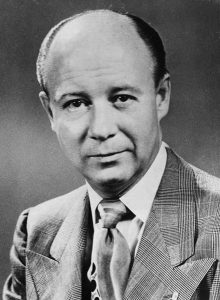 Louis B. Seltzer, Editor Cleveland Press
Louis B. Seltzer, Editor Cleveland Press
w/o September 14
Louis B. Selzer (19 September, 1897 – 2 April 1980)
Editor of the Cleveland Press (Cleveland’s largest circulation newspaper) for 38 years from 1928 thru 1966, Selzer was a Cleveland power broker who helped to make political careers as result of his support. Read Paul Porter on Louis B. Selzer here starting on page 200-216.
 Paul Brown with Quarterback Otto Graham 1952
Paul Brown with Quarterback Otto Graham 1952
w/o September 7
Paul E. Brown (7 September, 1908 – 5 August 1991)
Paul Brown developed the techniques that revolutionized pro football during the 1940s and 1950s. The results? Paul Brown’s Cleveland Browns had the best record in the entire league during the 1950s and won 3 championships.

w/o August 31
Anthony J. Celebrezze (4 September, 1910 – 29 October 1998)
Anthony J. Celebrezze served the public for 45 years as Ohio state senator, mayor of Cleveland, Cabinet member in the Kennedy and Johnson administrations, and federal judge. He really had a remarkable life…Italian immigrant, one of 13 children, educated at Central High in Cleveland. Celebreeze has a Federal building named after him on East 9th Street. More on him

w/o August 24
Cleveland Grays (formed 28 August, 1837)
The Grays were Cleveland’s first militia, an independant volunteer company originally formed to protect Cleveland in case of an invasion from Canada. Today the organization honors the military heritage of NE Ohio and is headquartered at Gray’s Armory.

w/o August 17
Archibald MacNeal Willard (22 August 1836 – 11 Oct 1918)
Cleveland artist best known for the “Spirit of 76”

w/o August 10
Michael R White (13 August 1851 – )
4-Term Cleveland Mayor (1990-2002) during one of the most turbulent periods in Cleveland’s history, some of it due to Mayor White’s policies and personel decisions. But Mayor White also led the effort to keep the Browns and Indians in Cleveland, obtain Cleveland mayoral control over Cleveland’s schools and efforts to improve the economy of the city. His election in 1989 against George Forbes in the General Election and others in the Primary was perhaps the most interesting election since Carl Stokes was elected in 1967. White was also the first African American President of the Undergraduate Student Government at The Ohio State University in 1972-3
Watch his interview here and read more about him here
w/o August 3
Daniel Edgar Morgan (7 August 1877 – 1 May 1949)
One of the authors of the 1913 Cleveland Charter, Mr. Morgan was a progressive Republican who joined ranks with Newton D. Baker and others to help create the political framework for 20th century Cleveland. Mr. Morgan also became Cleveland City Manager in 1930, replacing William Hopkins and was a judge for many years. Read Daniel Morgan’s biography, written by Dr. Thomas Campbell
 Anderson Design Group
Anderson Design Group
w/o July 27
Leonard Case, Sr. (29 July 1786 – 7 December 1864)
Businessman and philanthropist, from 1821-1825, as president of Cleveland village council, he was responsible for planting shade trees along streets earning Cleveland the name “Forest City”. His sons helped to create Case Institute of Technology which is today’s Case Western Reserve University.

w/o July 20
William Rowland Hopkins (26 July 1869 – 9 February 9 1961)
William Hopkins is best known for having Cleveland Hopkins Airport named after him. He was appointed Cleveland’s first City Manager in 1924, a non partisan position that replaced the Mayoral form of government in Cleveland from 1924 – 1932. He was an extremely active City Manager and under his administration which ran from 1924-1929, he developed parks, improved welfare instititutions, laid the groundwork for the building of Public Hall and actively pushed the idea of a municipal airport at a time when air travel was very limited. He made an enemy of Republican boss Maurice Maschke in the late 1920s who managed to have Hopkins removed as City Manager.

w/o July 13
Tom L. Johnson (18 July 1854 – 10 April 1911)
Four-term Mayor of Cleveland (1901-1909), millionaire, monopolist, populist and follower of Henry George. Tom L Johnson has two statues in Cleveland with the most prominent on Public Square. There are been much written about Johnson and to read more we suggest that you start here

w/o July 6
John D. Rockefeller (8 July 1839 – 23 May 1937)
Probably Cleveland’s most famous citizen and the creator of the modern oil industry. Through Rockefeller’s Standard Oil Corporation, enormous wealth was created in Cleveland. For more on John D. Rockefeller, go here

w/o June 29
William Howard Brett (1 July 1846 – 24 August 1918)
Head librarian of the Cleveland Public Libray from 1884-1918, William Howard Brett was a big believer in open stack libraries and adult education. Read about Mr. Brett in the C. H. Cramer history of the Cleveland Public Liibrary located here

w/o June 22
Dorothy Fuldheim (26 June 1893 – 3 November 1989)
The first woman in the United States with her own news program, Dorothy Fuldheim was a pioneer in television news and entertainment. For more, visit our section on Ms. Fuldheim, here

w/o June 15
Carl Stokes (21 June 1927 – 3 April 1996)
The first black mayor of a major American city, he later became a news anchorman in New York, judge and United States Ambassador. For more, visit our section on Mr. Stokes, starting here
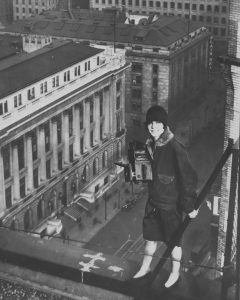
w/o June 8
Margaret Bourke-White (14 June 1904 – 27 August 1971)
Photojournalist who made Cleveland home for a brief two years between 1927-1929, but who’s photos of the Terminal Tower and the Otis Steel Mill during that period are studied and admired to this day. The photo above on a Superior Avenue rooftop is typical of her willingness to do virtually anything to get the desired image. For more on Ms. Bourke-White, read this Mike Roberts essay that ran in Cleveland Magazine.
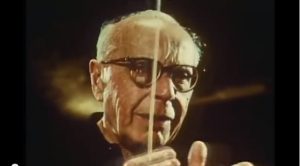
w/o June 1
George Szell (7 June 1897 – 30 July 1897)
Internationally renowned conductor and music director of the CLEVELAND ORCHESTRA from 1946 through his death in 1970.
Watch this short video of Mr. Szell rehersing with the Cleveland Orchestra.
To read more about the Cleveland Orchestra, go here
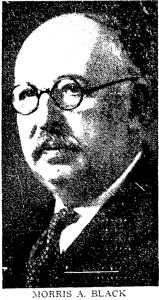
w/o May 25
Morris Alfred Black (31 May 1868 – 23 April 1938)
Businessman, philanthropist and civic leader, Morris Black made his money in Cleveland’s Garment Industry with the “Wooltex” brand of woman’s coats at H Black Co. He was a founder of the Cleveland Civic League which was a predecessor of the Citizen’s League. For more on the Civic League and the Citizen’s League, read this
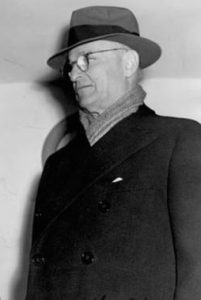 Thomas Girdler, 1942 (CSU)
Thomas Girdler, 1942 (CSU)
w/o May 18
Tom Mercer Girdler (19 May 1877 – 4 Feb. 1965)
Infamous hard-as-nails President of Republic Steel Corporation during the 1930s, one of the largest employers in Cleveland, with 9,000 workers. If you want his side of the story, read “Boot Straps” his 1943 autobiography.
For a less flattering story, watch:
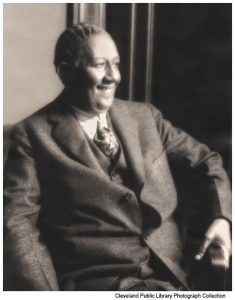
w/o May 11
Thomas W. Fleming (13 May 1874 – 18 Jan 1948)
Cleveland’s first black councilman, a shrewd ward politician, Mr. Fleming was part of the Republican “Maschke machine” during the 1910s and 1920s, a time when the majority of blacks voted Republican. Mr. Fleming was convicted of taking a bribe that many thought was a “frame-up” which ended his political career in 1929.
For more on Thomas W. Fleming, read this Cleveland Magazine article written by Eric Trickey.
CSU Special Collections
w/o May 4
John Long Severance (8 May 1863 – 16 Jan 1936)
Cleveland industrialist and the man who gave the majority of the funds needed to build Severance Hall, the home of the Cleveland Orchestra
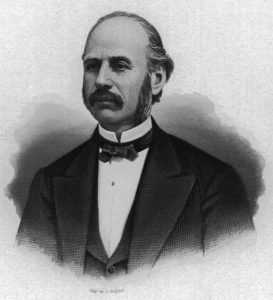
w/o April 27
Amasa Stone (27 April 1818 – 11 May 1883)
The father of Cleveland’s railroads. Also the father of Flora (Mather), Clara (Hay) and Adelbert. Mr. Stone had a big life, with a lot of ups and downs. During his 65 years, he saw Cleveland develop from a small town into a real city and he was in the middle of a lot of it.
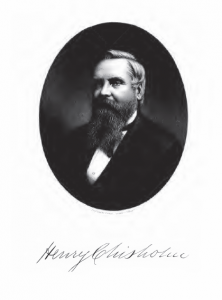
w/o April 20
Henry Chisholm (22 April 1822 – 9 May 1881)
The father of Cleveland’s steel industry. Mr. Chisholm was “beloved” by his workers at a time when this was not always so. When he died, thousands of workers and management alike walked to his burial site at Lake View Cemetary to pay their respects. That relationship was to change after Henry Chisholm’s death when his son William ran the company.
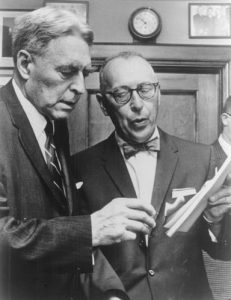 Cleveland Trust Board Chairman George Gund (left), with Shaker Heights Mayor Paul Jones, 1964 (CSU Special Collections)
Cleveland Trust Board Chairman George Gund (left), with Shaker Heights Mayor Paul Jones, 1964 (CSU Special Collections)
w/o April 13
George Gund (13 April 1888-15 Nov. 1966)
The man who helped to create the market for decaffeinated coffee in the United States in the 1920s, he also ran Cleveland Trust Bank for over 20 years. His wealth (nearly $600 million) was instrumental in creating the Gund Foundation.
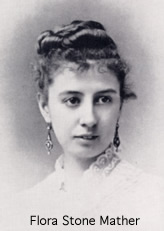
w/o April 6
Flora Stone Mather (6 Apr. 1852-19 Jan. 1909)
One of our favorites, the daughter of Amasa Stone, the founder of Western Reserve College For Women and a major player in the Settlement movement at Goodrich House. Wife of Samuel Mather and mother of 4.

